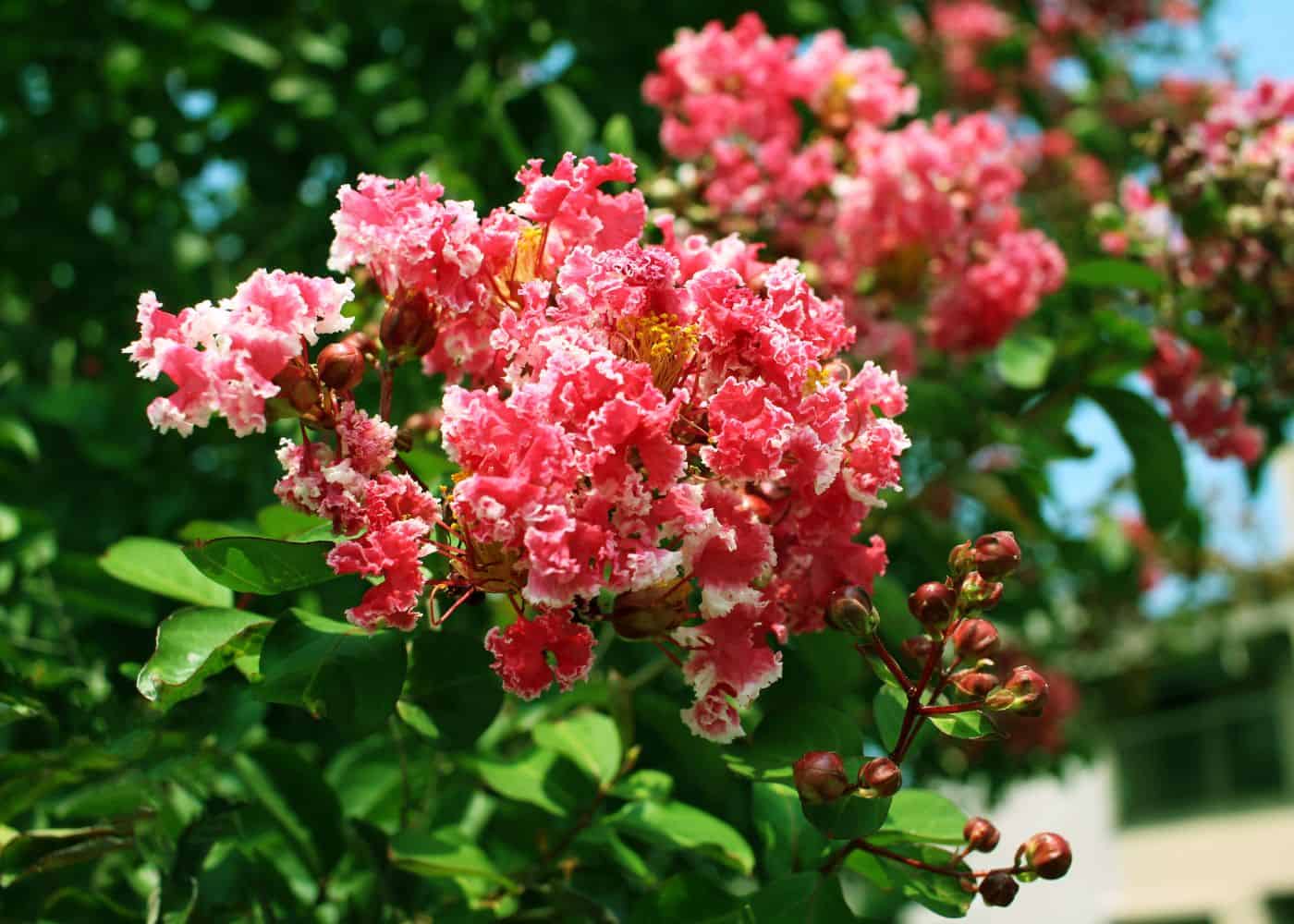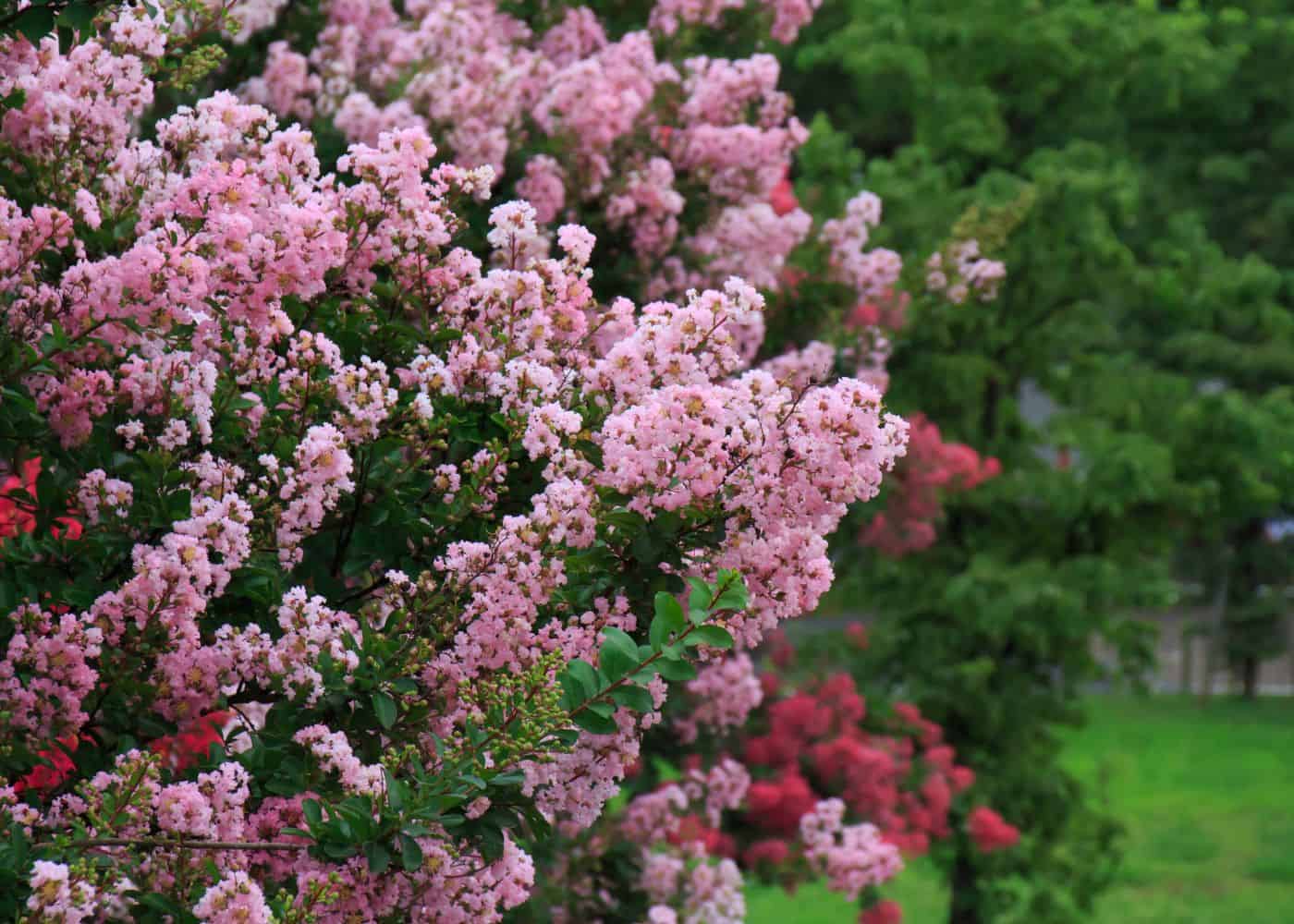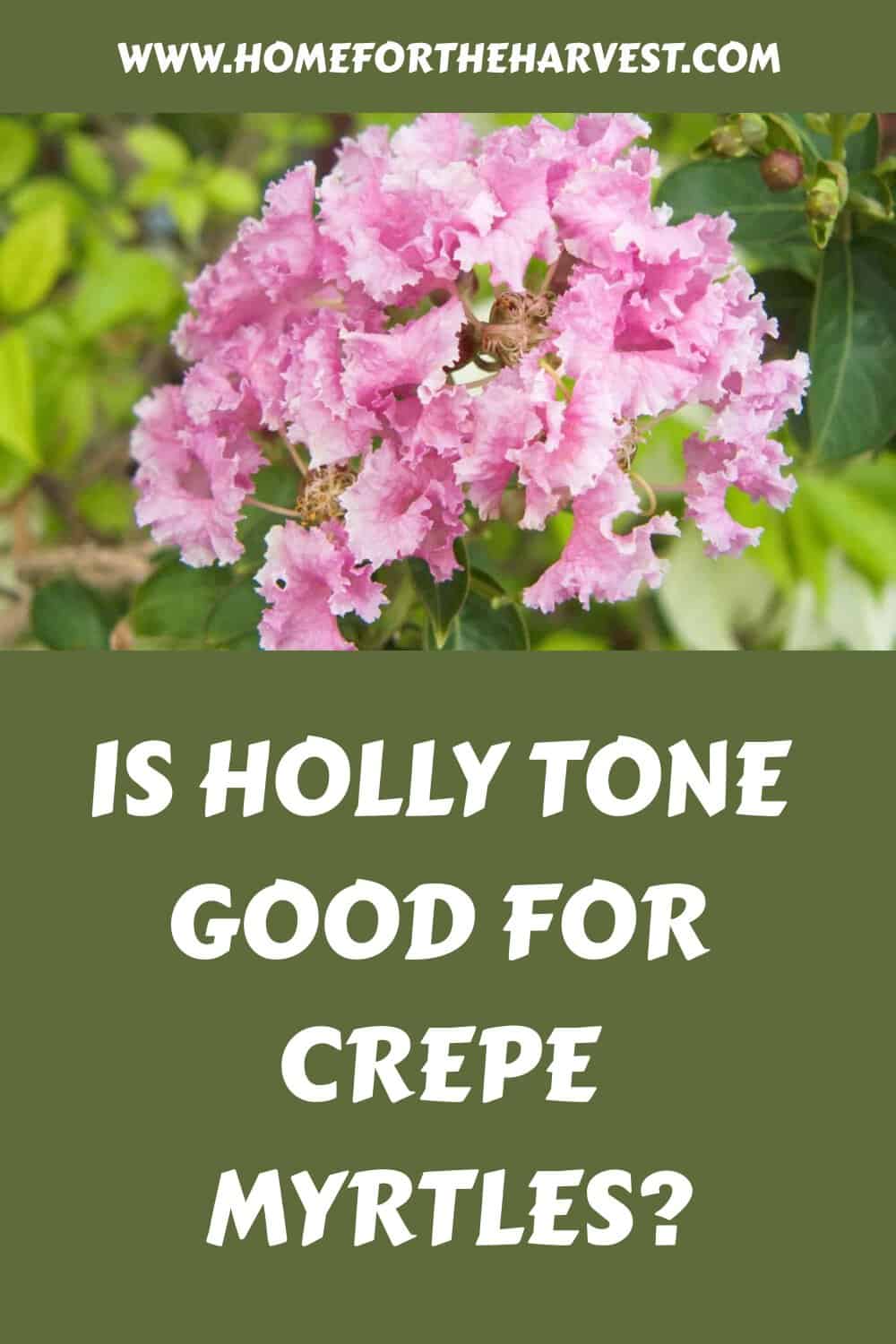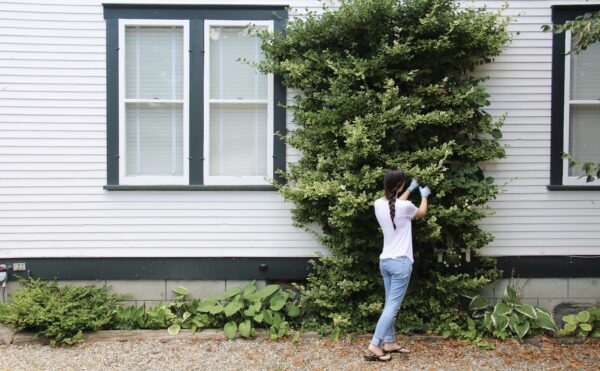Many gardeners, especially those in the south, love the appeal of crepe myrtles. Often time, they don’t realize what it takes to keep crepe myrtles healthy and to appreciate the blooms they bring in the summertime. Using the correct fertilizer for crepe myrtles is imperative to the successful growth of these flowering trees. Learn whether Holly Tone is good for crepe myrtles below.

Using Holly-Tone to fertilize crape myrtles
If you want to grow stronger, more beautiful crepe myrtles, Espoma Organic’s Holly-Tone Fertilizer is usually a great choice. This specially formulated, quality fertilizer is for plants like crepe myrtle, who love acidity. The fertilizer is relatively balanced (4-3-4) and will promote green foliage and strength in your plant. This fertilizer is also great for strawberries, blueberries, and camellias.
Holly-Tone is especially appropriate if a garden soil test shows that your soil is alkaline. While crape myrtles will tolerate alkalinity levels up to about 8.0, they tend to do better with slightly acidic soil. Holly-Tone is made of 5% sulfur, which acts as an acidifying soil amendment.
If, however, a soil test shows that your soil is extremely acid (5.5 or below), Holly-Tone is not the best choice. For overly-acidic soils, you don’t want to add any more acidity than is already there, as it can lead to certain mineral imbalances that can negatively affect growth. If you have overly acidic soil, choose a more neutral product such as Espoma’s Plant-Tone, which contains only 1% sulfur.
Tips for using Holly-Tone at home
This fertilizer is a strong and fast-acting fertilizer. You will get more blooms and more vibrant colors on your crepe myrtle when using Holly-tone. The fertilizer is slowly released to supply your plant with nutrients over long durations of time. It’s best to apply the fertilizer throughout early spring and into summer to get vibrant blooms.
The pros of using Holly-tone are that it is natural and organic, non-toxic, environmentally safe, made for acid-loving trees, and acts as a long-lasting food supply. The only con is that is can damage shallow root systems when applied too heavily (like any fertilizer), so be mindful of that when using it with a crepe myrtle or any other plant.
“Crape myrtles like a soil pH of 6.0-6.5. This is considered slightly acid. Do not guess on soil pH – soil test. You can lower the soil pH with sulfur products and raise the pH with lime products. But always do this based on the results of a soil test.”
Louisiana State University College of Agriculture, Take care of your crape myrtle trees

Applying fertilizer for crape myrtles, including potted crape myrtles
Fertilize your newly-planted young plants during the first growing season to keep them strong. You will need about a teaspoon of fertilizer per month during this time.
If you live where it frosts early in the fall, avoid fertilizing before that first frost. Wait until early spring to fertilize.
Mature plants will thrive on granular fertilizer. Do not fertilize directly near the tree trunk, this can damage your tree. Instead, fertilize over the drip line and let nature do its work to bring your colorful blooms. The drip line is a circle on the ground right at the perimeter of the leaf canopy above.
Crepe myrtles in containers or pots: If your plant is in a container, apply a water-soluble or slow-release fertilizer. Make sure your fertilizer is water-soluble before you buy it. Liquid fertilizer would also work well. In early spring, watch for new growth and fertilize as soon as you see it. You will see vigorous growth using it.
Crepe myrtles grow best in soil with a pH of 5.5 to 6.5 to promote healthy growth. Liquid fertilizer may not be the best option for these plants since they eat so quickly. You want an organic fertilizer that slowly feeds over time.

What is the best fertilizer for crepe myrtles?
When choosing a fertilizer for your crape myrtles, you want to consider your options. Many balanced fertilizers work great for crepe myrtles. Here are some great options:
- Espoma Holly-Tone (4-3-4)
- Dr. Earth Acid Lovers Fertilizer (3-4-3)
- Kellogg Garden Organics Rose & Flower Fertilizer (4-6-2)
If your fertilizer has no added acidifier, you can purchase soil acidifier amendment separately.
With any fertilizer, don’t go overboard. You want to give them just the right amount without overdoing it. Follow the instructions on the package for best results.
As you launch into your journey of growing and fertilizing a crepe myrtle, be sure to read the labels of any products you choose. Please pay attention to where you plant the trees, how often to water them, and which fertilizers you use, and be sure to prune them regularly.
Regardless of the fertilizer you choose, read the label thoroughly and follow all directions. Specially formulated fertilizers like Holly-tone are wonderful choices to help your plant absorb nutrients. With time and patience, your crepe myrtle will thrive, and you will have gorgeous blooms in no time.
FAQs
When should I fertilize crepe myrtles?
The best time of year to fertilize crape myrtles is in the early spring. You can choose between liquid, slow-release fertilizer, or granules. You want to fertilize as soon as the first leaves appear on your tree.
During the spring and summer months, fertilize lightly every few weeks to give the tree appropriate nutrients. Different products have different application frequencies. Feeding any more than recommended will give the plant too much fertilizer. Within no time, you should see these flowering plants taking off.
How can I make my crepe myrtles bloom more?
There are a few things you can do to help your crepe myrtle bloom well. You can begin by pruning your crepe myrtle after the typical bloom time. Do this carefully and lightly so you don’t overdo it.
Trim away any dead branches inside the tree to allow extra light and air into the interior of the plant. Also take out any branches that appear to be damaged or diseased.
Does Epsom salt help crepe myrtles bloom?
Epsom salt is great for a calming bath, but its not really meant for use in the garden. Use a proper fertilizer product like Holly-Tone that will help to increase the magnesium in the soil without throwing other nutrients out of the careful balance they require to remain available to the plant. Also, be sure to water your crepe myrtles regularly, as plants can’t uptake minerals if they aren’t also uptaking water from their roots.
Are coffee grounds good for crape myrtle trees?
Acid-loving trees like crepe myrtles love coffee grounds as mulch, especially if they are composted with some leaf mulch. If you are looking for a simple and cheap mulch to lay around the crepe myrtle trunks, try coffee grounds. The acidity is a treat for the tree’s trunk since they love slightly acidic soils. Do this around the same time you would be fertilizing crepe myrtles.
Should I fertilize a crepe myrtle in the fall?
The best time to fertilize crepe myrtle trees is in the spring, just as blooms are beginning to show up. Throughout the growing season, gardeners fertilize their crepe myrtles every two weeks. Stop fertilizing the trees in the fall so they can harden off the plant and begin preparing for winter.
Where should I plant crepe myrtles?
Crepe myrtles aren’t too picky about where they are planted and are great because they thrive almost anywhere there is adequate sunlight. You’ll want to choose a location that has at least 6 hours of sunlight a day. Most crepe myrtles grow up to 25 feet tall and 15 feet wide. Think about this when choosing a location.

Resources
References
- Mississippi State University Extension, Crapemyrtle – Flower of the South
- Louisiana State University College of Agriculture, Take care of your crape myrtle trees
More tips on landscape shrubs
Landscaping shrubs can be a wonderful addition to your yard! See more of our posts about these ornamental plants:







